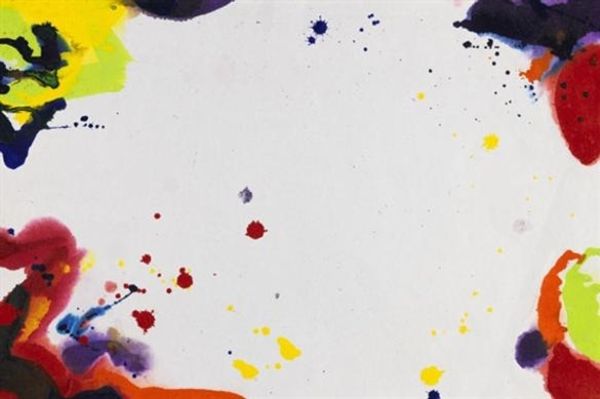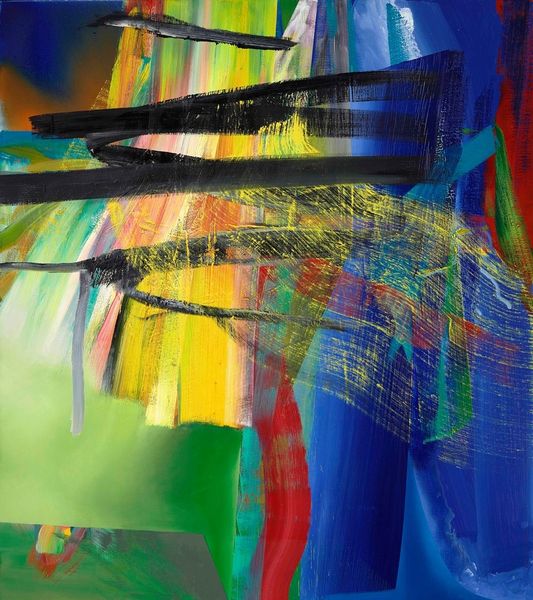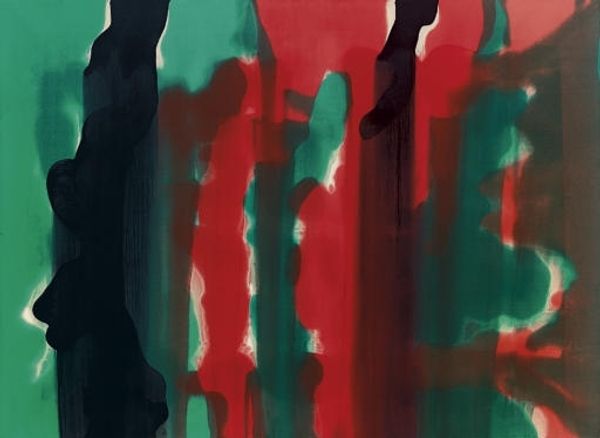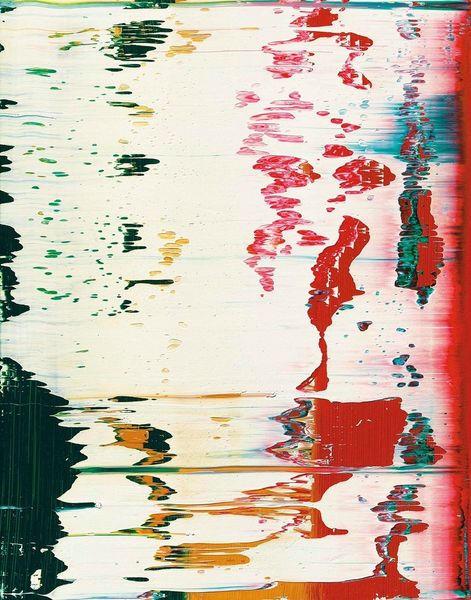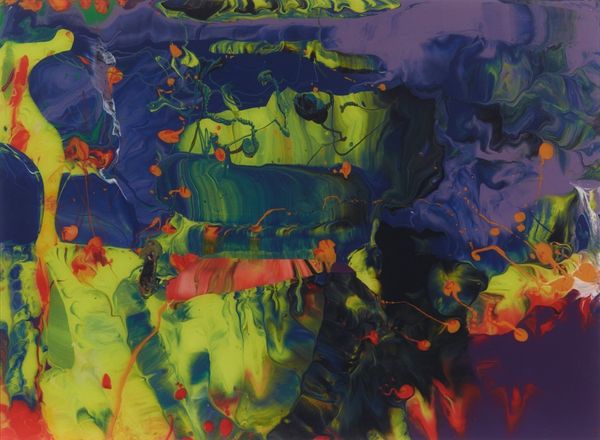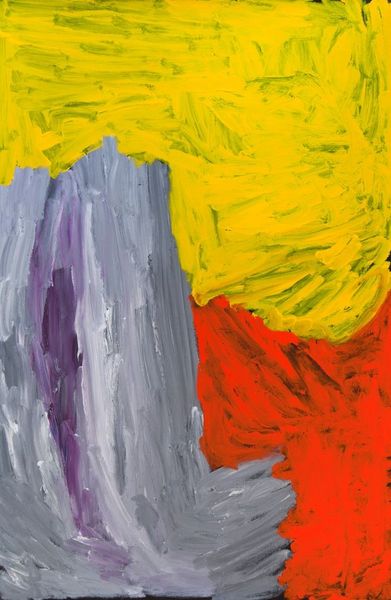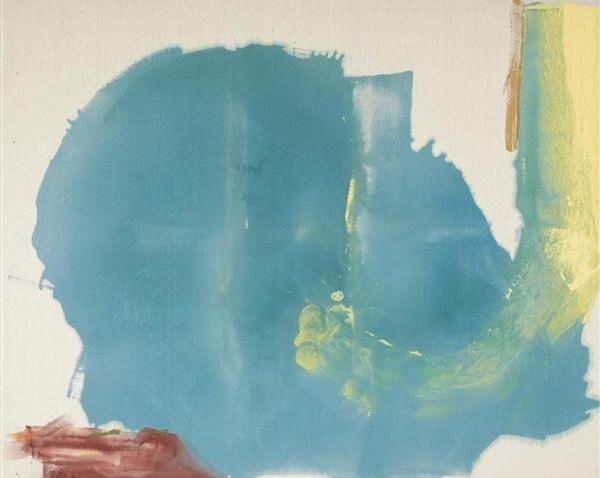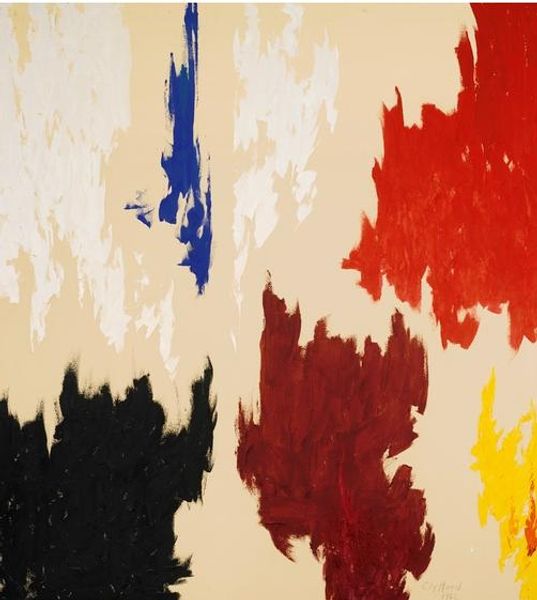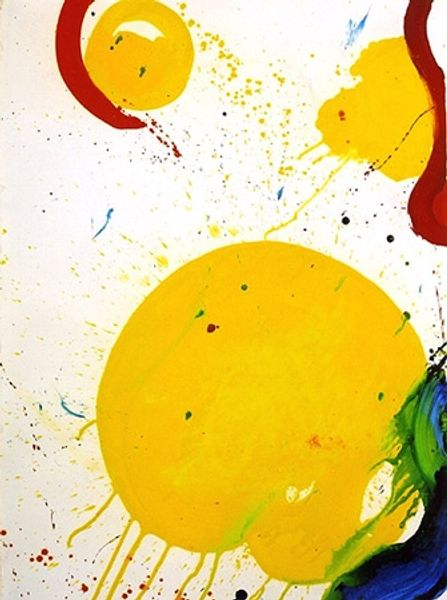
stain, acrylic-paint, impasto
#
abstract-expressionism
#
washington-colour-school
#
abstract expressionism
#
stain
#
colour-field-painting
#
acrylic-paint
#
impasto
#
geometric
#
paint stroke
#
abstraction
#
abstract art
Copyright: Morris Louis,Fair Use
Curator: Morris Louis’ “Para III,” dating back to 1959. An exquisite example of stain painting rendered with acrylic on canvas, currently held at the High Museum of Art. Editor: Well, it's certainly… vibrant. Almost overwhelmingly so. The interplay of reds, yellows, greens and blues create a cascading effect, but do you think it borders on being visually chaotic? Curator: That vibrant quality is integral to understanding the artwork. Note the technique: the canvas is unprimed, allowing the acrylic paint to soak directly into the fabric, essentially becoming one with it. This integration eliminates any sense of layering or surface texture. Editor: Interesting. This emphasizes its departure from traditional painting practices and connects with prevailing avant-garde concepts rejecting established forms. I'm interested in the art's status then. Would it be accessible to broader audiences? Curator: This lack of discernible brushwork creates a "disembodied" field of color. There’s an ethereal feel. And it encourages the viewer to engage with color, form, and composition itself as the subject, rather than narrative or representation. Editor: That is, it emphasizes the material elements while perhaps intentionally minimizing or denying immediate interpretation, potentially placing more importance on its form and physicality? The placement of such large planes of bright colors demands attention. The choice not to offer conventional subjects removes avenues through which general audiences can draw meaning, possibly isolating viewers or inviting speculation as to meaning, beyond just color interplay and technique. Curator: Precisely. And this approach aligns closely with the tenets of Color Field painting. There’s a conscious rejection of gestural brushstrokes or any subjective application of paint typically associated with Abstract Expressionism. Louis sought a more direct and objective interaction with the material itself. Editor: So rather than interpret history from "Para III" we look at how its structure informs history. In what ways was Color Field painting trying to break free of the artistic currents in which it was produced, to then define art history going forward? Curator: Ultimately, "Para III" demonstrates Louis' commitment to exploring pure opticality. It offers an experience divorced from external references. Editor: An intriguing artwork to consider. Its legacy resides in the continuous refinement of form and material interaction.
Comments
No comments
Be the first to comment and join the conversation on the ultimate creative platform.
